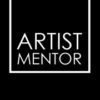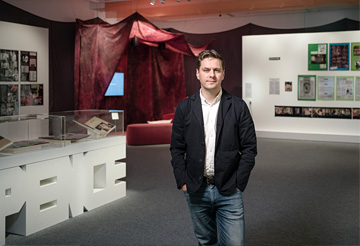Interview: GEORGE VASEY
Ceri Hand Artist, Curator, Interviews
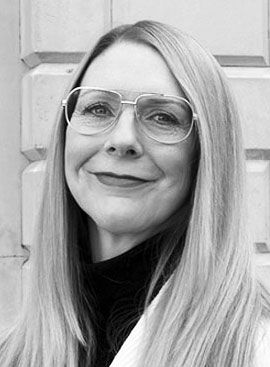 I first met George Vasey in 2013 at my gallery in London and subsequently enjoyed the text he published in a newspaper, as part of his MFA curating course at Goldsmiths. I have enjoyed following his career and programming ever since. I admire his gentle, inquisitive, interrogative, considerate and generous approach.
I first met George Vasey in 2013 at my gallery in London and subsequently enjoyed the text he published in a newspaper, as part of his MFA curating course at Goldsmiths. I have enjoyed following his career and programming ever since. I admire his gentle, inquisitive, interrogative, considerate and generous approach.
I am also humbled by his voracious appetite for research and his extraordinary knowledge of so many different aspects of culture and society, evident in his responses below. His curatorial approach weaves art historical and contemporary references, artworks, images and objects together, so they resonate and riff off each other. His exhibitions are sensory and intellectually rich, playful, meaning-full and respectful to the artists vision. It’s clear in all manifestations of his ideas that he loves art and artists and is committed to bringing their work to a wider public.
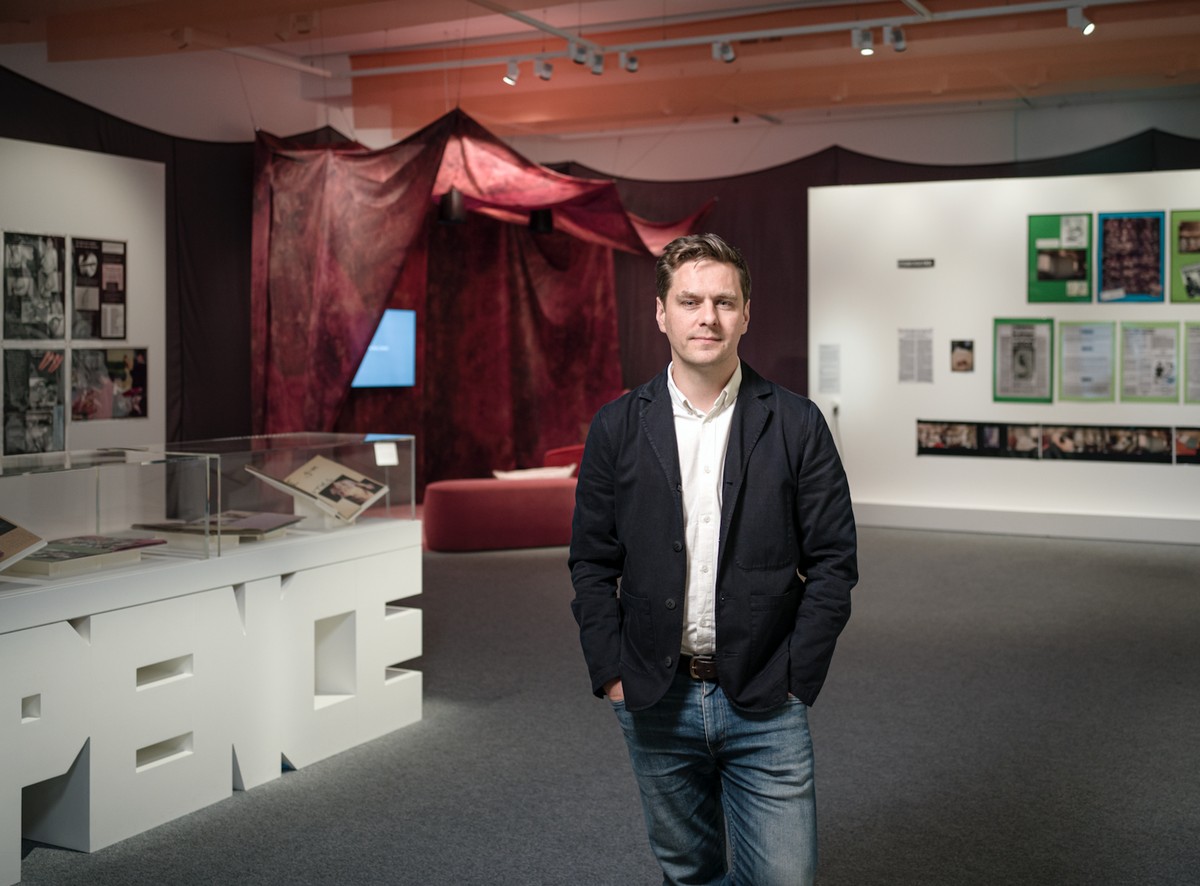
Photograph by Thomas Farnetti. Source Wellcome Collection
George Vasey is a curator at Wellcome Collection and writer. He has curated projects across the UK in commercial and public galleries. He has previously worked as Curator at Northern Gallery for Contemporary Art (NGCA), Sunderland and as a Curatorial Fellow at Newcastle University. In 2017 he co-curated the Turner Prize at Ferens Art Gallery, Hull. His writing has been published in Art Monthly, Burlington Contemporary, Frieze, and Mousse magazine. He is a trustee at New Contemporaries, an Artist Adviser for Jerwood Arts and on the executive committee for AICA UK. .
What are you doing, reading, watching or listening to now that is helping you to stay positive?
I listened to a podcast recently where the musician Laura Marling describes writing as “breathing out” and research as “breathing in” the world around her. This moment feels like a breathing in period where I’m processing what is happening. I’ve been reading a lot and recently enjoyed books from Rachel Cusk, Rebecca Solnit and Jia Tolentino. I’m currently reading Elton John’s Me which is very funny. I just finished Jerry Saltz’ How to be An Artist which is full of great advice.
I’ve been listening to lots of podcasts and watching online projects. I’ve particularly enjoyed Transmissions by Tai Shani, Anne Duffau and Hana Noorali. My partner Elinor Morgan and I listen into Jonathan P Watt’s Radio Caroline most nights. It’s great to feel part of an online community that these projects foster. Music is a huge part of what makes me happy and I’ve enjoyed new albums from Caribou, BC Camplight, Fiona Apple and Childish Gambino.

Shona Macnaughton performing at Blend the Acclaim of your Chant with the Timbrels, 2016, Jerwood Space London. Image copyright of Hydar Dewachi
What are your core values and drivers that you bring to your curatorial work? What do you care about?
I’m just fairly obsessed by art. It hooked me as a teenager and in some ways, I wish I’d found a passion with a job that was more secure and paid more, but that’s life! I feel very fortunate that I get paid to work with artists and learn from them. I make sense of the world through art (and music, films and books) and care deeply about what artists can bring to the world. I want to make galleries and museums feel more accessible to audiences and ensure that more people from a diverse range of backgrounds have opportunities in the art world.
I remember training around 800 volunteers for Hull City of Culture when I co-curated the Turner Prize in 2017. It was such as transformative experience and it articulates what I care about — sharing an enthusiasm for culture with others. Many of the volunteers were so committed and energised and they wanted to learn about contemporary art. I once heard somebody say that a curator’s role is to turn confusion into curiosity, and I think that nails it.
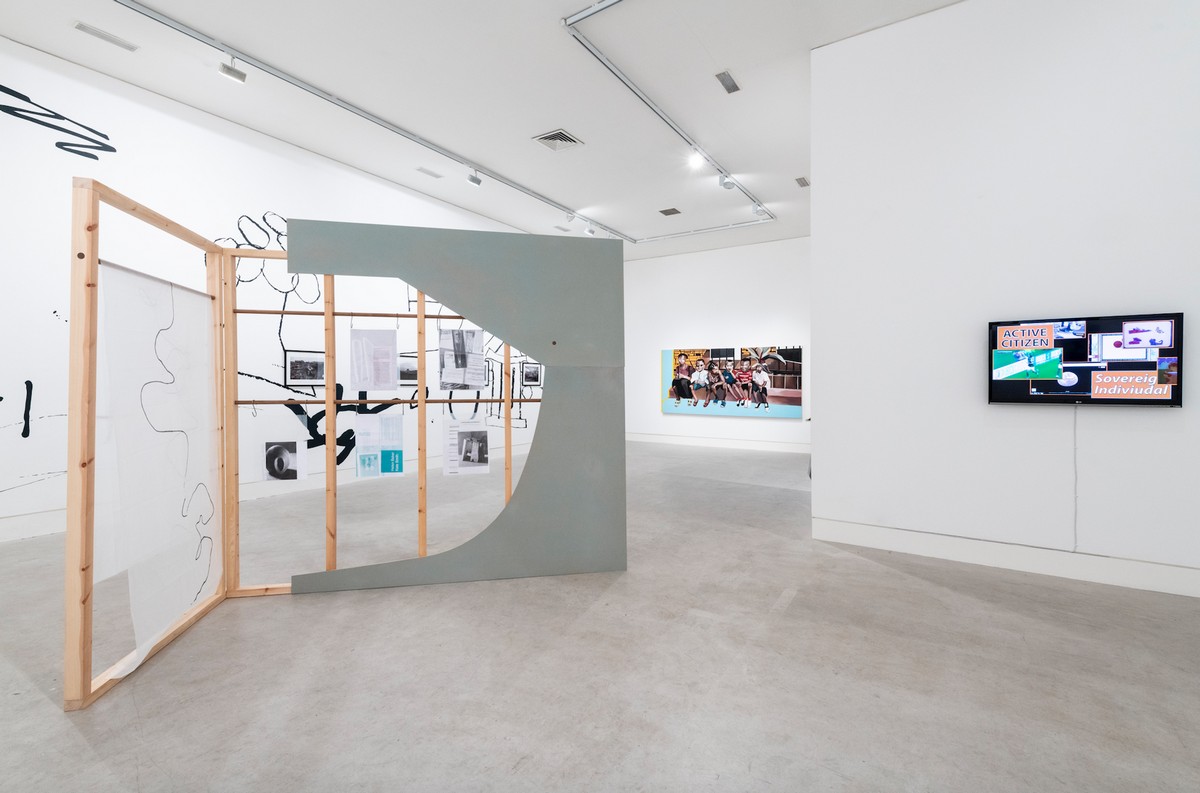
The Everyday Political, 2018, (installation view). Photography by Damian Griffiths. Courtesy of Artists and Southwark Park Galleries
How do you develop your curatorial ideas? How you test or scope your ideas?
When working up an idea for an exhibition I ask myself some simple questions; why should I do this now? What form should it take? Who is it for? Who should be part of the conversation? These questions are really crucial in developing an idea into a workable proposal. My ideas often come tangentially, and they can percolate for many years. They often emerge while I’m washing the dishes, having a conversation with someone or going for a run. Ideas are shaped in conversation with artists and peers, and each project is formed through these collaborations. What you often see in the gallery is a negotiation between lots of different factors. Ideas are the easy part and turning them into compelling projects takes lots of strategy, time, commitment and energy.
A good example of how an idea became an exhibition was These Rotten Words, an exhibition I curated at Chapter Arts Centre in 2017. The title came from a photograph of graffiti that Mark Leckey posted on Instagram that said, “words don’t mean anything anymore.” I just loved the poetry of the statement. It made me think about political disempowerment. I thought about the idea of disillusion being a fertile space for new forms and how punk music often played with the repetition of words to shift their meaning into melody. I liked the word rotten (after Johnny Rotten) and thought it framed the ways in which some artists I’d been in conversation with (Anna Barham, Anneke Kampman, and Marie-Michelle Deschamps) were playing with language. Hannah Firth invited me to do an exhibition alongside a festival they were doing around the spoken word and the show came together.

These Rotten Words, 2017, Chapter Art Centre, Cardiff. Image courtesy of Jamie Woodley. Work left to right: Anneke Kampman, Rebecca Ackroyd and Joanna Piotrowska
How do you discover artists and what makes you finally decide you want to work with an artist?
I go to a lot of degree shows and see as many exhibitions as I can. A lot of artists get in contact with me and people recommend artists all the time. I try and do studio visits as much as possible. Over the years I’ve discovered many great artists through New Contemporaries and Jerwood Arts, two organisations who have both played a pivotal role in giving artists their first real exposure and I’m now involved with in different ways.
Working with artists is often about building relationships. I may put an artist in a group show and if the conversation is fruitful that may build into a commission or solo show. I often write about an artist’s work and develop a relationship that way. Of course, I work with someone because the work is good but it’s important that we both get something from the collaboration and that we can work well together. I want to feel like I’m useful for an artist and not every artist needs the kind of support I can offer.

- Shona Macnaughton performing at Blend the Acclaim of your Chant with the Timbrels, 2016, Jerwood Space London. Image copyright of Hydar Dewachi
How do you gauge which artists and artworks will be interesting to audiences?
I trust my gut instinct and I try and listen to what audiences are saying. A trendy early career artist may get you lots of attention in the art world but have little traction with local audiences in Sunderland. With an exhibition programme you’re trying to take people on a journey that registers on a local as well as national level.
I think if the rationale of an exhibition or programme is embedded in a story people are interested in they will engage with it. You’re trying to figure what is important to people and then undermine or at least broaden their expectations. People want to understand the rationale for the work in front of them — it’s often not the work that’s boring or inaccessible, it’s the interpretation. People want something to hook onto. I don’t believe that the curator’s job is to tell people what value art has to their lives has, but empower people to contribute to, and contest, what is valuable to society. When people come into a gallery and tell me that they don’t understand the work, I often say; “good, neither do I.” Let’s learn together.
What do you offer or provide artists in the curatorial relationship?
I studied art originally and made work for years and came into curating through putting on shows in my front room. I know what it feels like to sit in a cold studio and be lost with your own work. I think artists typically need space, time, money and dialogue to make their work. In the first instance I offer recognition and discussion. I’m a fan and a critical friend. If the right opportunities come together, I can help with fundraising and create visibility for the work. Sometimes that can be as simple as a nomination for an award, a recommendation to another curator or an actual show.
When I work with an artist, I’m offering them my attention. I often say that I’m a curator not a magician. I have no magic wand and I make no promises, but I’ll work hard for the artist to help them in any feasible way I can.
Can you describe what you ideally want to achieve when curating an exhibition?
I’m aiming to achieve different things with specific projects. I’m trying to add something to the cultural landscape and to foreground the voices of artists I think are doing interesting things and perhaps I feel are being overlooked. At Wellcome Collection, where I currently work, we aim to challenge how people think and feel about health, so the projects are really attempting to bring art into conversation with cultural and scientific discourse — to critically examine assumptions, and to explore how knowledge is formed through particular ideological structures.
What I’m typically trying to achieve with an exhibition is the sense of something prescient that has a personality. A good show is the product of lots of listening and good conversation. Ultimately, I want to learn something through the process of curating. Each project takes something out of me and gives me something and I want to surprise people and surprise myself. I want to go on a journey with an artist. I’m like a companion on a walk — although I’m useless reading maps.
Can you describe one of your most rewarding relationships with an artist - what factors made it enjoyable?
There have been so many artists who have become friends so I wouldn’t want to single one out! A good relationship with an artist is super crucial. I’ve worked on exhibitions and commissions for two years where you’re speaking to the artist daily. I think transparency and honesty are really important. Problems arise when an artist feels like the institution isn’t listening or caring about their work. What I’ve learned is that it’s good to be really clear from the outset about roles and responsibilities and not to over promise and also for the artist to be clear about what they need.
Sometimes artists just want to be left alone, others want to talk about everything, and you become a sounding board. The relationships that have been most rewarding for me are when it’s a conversation and you feel that the artist respects your advice and you’re helping them to figure something out about their own work.

Potholes: Drawings of Eric Bainbridge, 1981-2016, 2016 at Workplace Gallery, London. Image courtesy of Workplace Gallery
What risks have you taken in curating that perhaps did not go so well but you learnt the most from?
I’ve curated projects that really haven’t worked that I’m proud of because I was trying something out. Through experience I’ve realised that it's best to start with something simple and build on that. Complex projects quickly unravel unless there is a strict framework.
The projects that I think haven’t worked so well are ones where I’ve tried to respond to a hot topic and not followed my own passion. I often say to students, what is the question your project is posing? If you can’t answer that, the project needs reassessing. I think it’s important to listen and be part of a community, but it takes time — for me at least — to figure out what is personally important.
I do think that bad curating tends to be a kind of visual mixtape, assimilating hot trends but bringing little to the party. So that’s what I think a lot about; what’s my take on this? Who can help me tell this story? I also think it’s crucial to know when to insert your voice and when to take a step back. It’s important to foreground other people’s voices that can tell stories you can’t and learn from these voices.
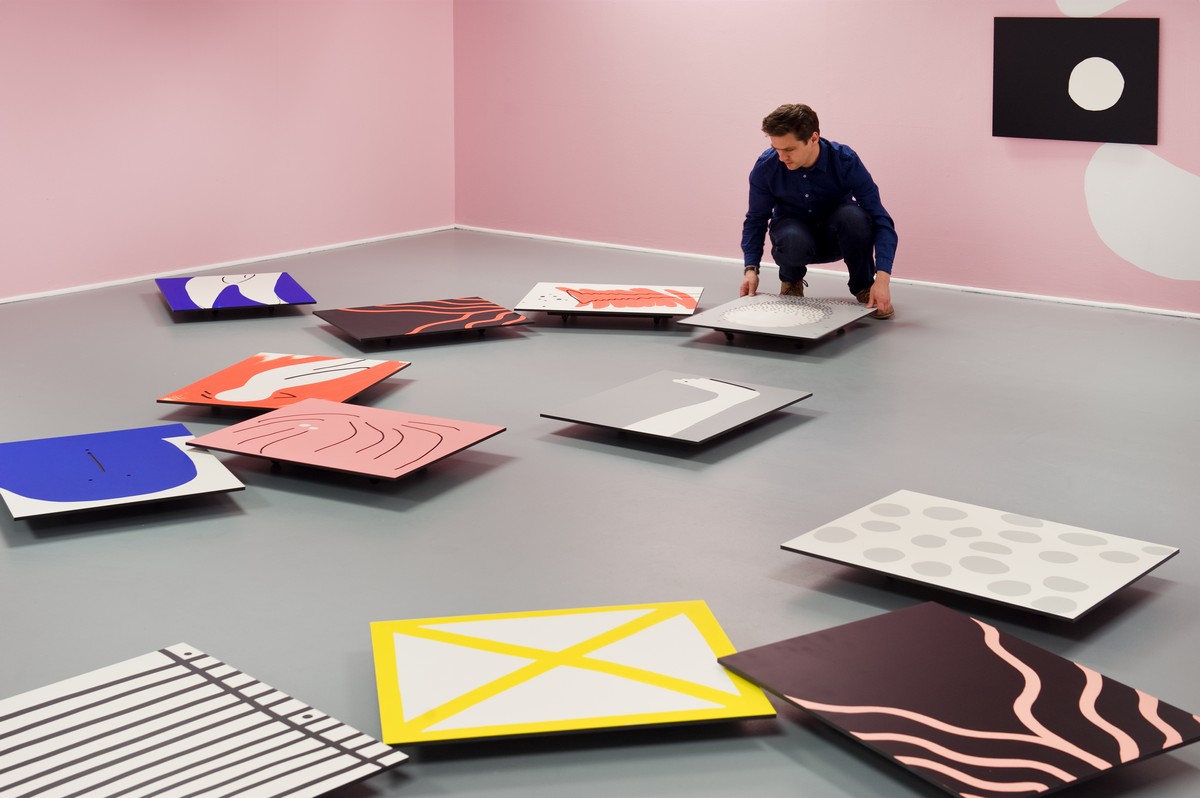
Turner, 2015, (installation view) at Northern Gallery for Contemporary Art. Photo courtesy of Cornelia Baltese
What is one of your personal favourite exhibitions or events you have curated and why?
A few projects stand out. The first exhibition I curated at Northern Gallery for Contemporary Art was a solo show by Joanna Piotrowska who has gone on to have exhibitions at Tate Britain and be included in the Berlin Biennale and in a show at MoMA. I did a show of paintings (displayed horizontally on wheels) with Cornelia Baltes with a budget of £500 that was bought by the Arts Council Collection. It’s great when you’ve committed to an artist and helped them in some small way on their onward success.
The Everyday Political at Southwark Park Galleries in 2018 was also an important show for me. The director Judith Carlton invited me to curate an exhibition of artists from the North-East to coincide with The Great Exhibition of the North. I still feel really proud of that show as it made me re-evaluate how to make group exhibitions. It felt like a time capsule and captured the conversations I was having with artists such as Joy Labinjo, Adam Phillips from Foundation Press, Emily Hesse and Holly Argent among others.
It was the product of so many studio visits and long discussions with people like Paul Moss at Workplace Gallery and Judith. I have a lot of fond memories of the project. I ended up co-editing an issue of Art Licks with Holly Willats off the back of that show exploring strategic regionalism — the idea of working into the centre rather than working from the centre outwards. It was about regionalism as an idea rather than a location.

The Everyday Political, 2018, Southwark Park Galleries, London, Image courtesy of Damian Griffiths
Work left to right: Joy Labinjo, Women Artists of the North East Library, Harriet Sutcliffe and Kuba Ryniewicz
What would you hope that people experience and learn from seeing one of your exhibitions or events?
I think that people should know themselves and the world slightly less when they encounter an artwork. I think good exhibitions can raise questions, create nuance, and undermine expectations. I also want people to be inspired.
Do you help fundraise for the show you curate & if so how?
Yes, more so in some contexts. When I worked as curator at NGCA I had to fundraise for every show and most independent projects need to be fundraised for. You’re normally modelling various outcomes for a project based on whether you’ll get money or not. Money has typically come from trusts and foundations, universities, Arts Council, many countries have some form of public funding that enable you to work with international artists. Occasionally commercial galleries and collectors have put money into projects, but my experience is that its typically about building value for projects by sourcing in-kind support and partnerships that can bring money into commissioning opportunities for artists.

Sick Ardour, 2018, Anna Barham at Newcastle University. Image courtesy of Anna Barham
What emerging artists are you excited by right now and why?
You’ve finally stumped me! Lots and I’ll probably forget loads of great people. So, I’ll just focus on artists I saw at last year’s degree shows. Sof’ya Shpurova makes enigmatic and surrealist figurative paintings that riff on Russian folklore and contemporary motifs. They felt very mature for such a young artist. Ayo Akingbade who is currently at the Royal Academy and is already doing incredibly well. Akingbade makes fantastic short-form lyrical documentary films that explore power, identity and community. I can’t wait to see more work by her. Danielle Brathwaite-Shirley’s VR work at the Slade BA show really stayed with me. The work “centres black Trans experience” and it was an intense and psychedelic experience that is really an assault on the senses and makes you feel intensely vulnerable. It’s one of the most interesting uses of VR I’ve experienced.

Misbehaving Bodies: Jo Spence & Oreet Ashery at Wellcome Collection, 2019. Co-curated with Bárbara Rodríguez Muñoz. Image courtesy of the Wellcome Collection, London
What helpful resources would you recommend to artists?
A-N (Artist’s Newsletter) is a great place for practical advice on fees and contracts etc. Artsquest is great also. It depends where you are based but a lot of organisations such as The Newbridge Project (Gateshead), SPACE (London) Eastside Projects (Birmingham), Spike Island (Bristol) have great schemes that provide support and networking opportunities for artists. I think the best resource is your peers really and building local and online communities. I tend to learn about things on Instagram and Twitter.
Do you have any advice for artists working with curators?
Curators are often incredibly busy and split between multiple projects and obligations, so professionalism is key. Keep to deadlines. Be ambitious but realistic. I think clarity is really important. Both parties should be clear about what they can commit to. Be upfront about the terms of the collaboration and don’t be afraid to question contracts and ask for further support. Every curator is different and bring different approaches to the relationship but as you learn about what you need apply it to the next project.
Also, I often say to artists that I like their work and they can keep me up to date with projects. Artists keep in touch with curators! Invite people to your studio. Encourage conversation. Remember that curators represent institutions, but they aren’t the institution.
Follow George on Twitter @georgevasey and Instagram: @georgevasey
Please share this interview
And do feel free to email or contact us via socials @cerihand
Coming Next...
An interview with GAIKA (aka Gaika Tavares), a British artist, musician and writer from South London. His debut album, Basic Volume, was released in 2018 by Warp Records, who describe the sound as "gothic dancehall and industrial electronics"
